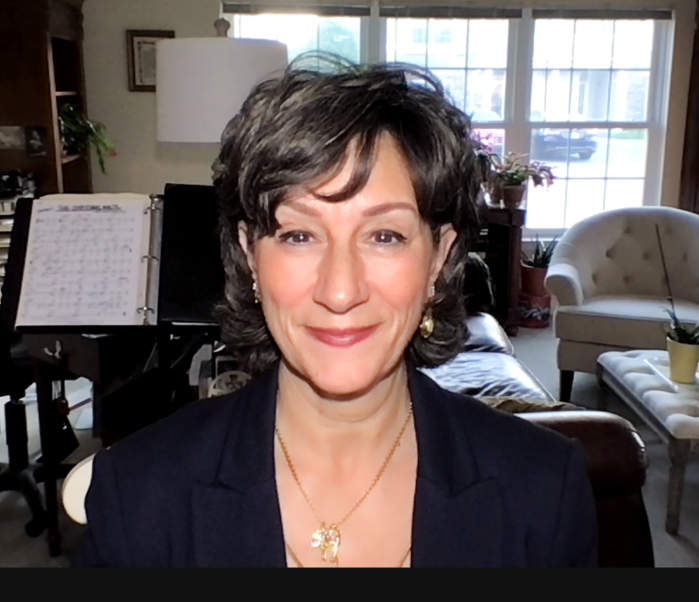
Compass agent Thomas Caramanno discusses the rise of boutique buildings and buyer demand in Queens. Photo courtesy of Thomas Caramanno
July 11, 2025 By Ethan Marshall
As home prices in Brooklyn and Manhattan continue to soar, a growing number of buyers are turning to Queens — a trend that Bayside-based Compass agent Thomas Caramanno says is reshaping the borough’s real estate market.
Thomas Caramanno has spent most of his ten-year career in real estate working at Compass Real Estate, which merged with his previous firm six years ago. Much of his work has involved properties in Astoria and Bayside, helping him to gain a deep familiarity with the real estate market in Queens.
In 2019, Caramanno’s real estate team was approached by Compass about the possibility of a merger after the real estate firm noticed the high sales volume and strong sales numbers that Caramanno and his team were putting up. Now, as part of Compass, Caramanno and his team have been able to assist many more clients in finding homes in Queens.
“Compass is a great brokerage,” Caramanno said. “We’re number one in the country four years in a row now by sales volumes. We’ve definitely been making inroads in the industry.”
Caramanno said he got into real estate while working towards getting his master’s degree in Journalism at Columbia University. A good friend of his had encouraged him to get a real estate license for a while, believing he would be a great fit for the field.
“I saw the direction that the journalism industry was going in,” Caramanno said. “I wanted to do long-form print journalism, which is sort of like a dying animal these days. Most people are getting their news on social media. I kind of saw the writing on the wall and felt like maybe I needed to pivot.”
After obtaining his license, Caramanno went one year without practicing real estate. Then, He joined the real estate team of a friend who encouraged him to pursue that license in the first place. They have been working together in the real estate industry for ten years now, including six years at Compass.
Caramanno said that Queens has become a popular area in the New York City real estate industry. One of the biggest contributing factors he mentioned for this trend was the more affordable rates in this borough compared to Brooklyn and Manhattan. At the same time, many neighborhoods in Queens are right next to these other boroughs, allowing for easy and convenient commutes.
“Brooklyn has become so astronomically expensive that a lot of people who were looking in Brooklyn and getting priced out are now coming over, especially to Western Queens,” Caramann said. “We’re seeing that in Astoria, we’re seeing that in Jackson Heights, Sunnyside, Forest Hills. People are looking and realizing, ‘Hey, I can get a lot more bang for my buck here than I can in Brooklyn.’ A lot of people are coming over from Brooklyn.”
Since the COVID-19 pandemic, Bayside and Astoria have become very popular areas for people to move to, according to Caramanno. “Astoria in particular, they’re building luxury condominiums everywhere you look. There’s a lot of newer development going on. Queens has really weathered the storm very well. I know people were worried when the pandemic hit, but Queens has been very resilient.”
Caramanno said there are different market trends in Queens, based on a neighborhood’s location. Northeast Queens neighborhoods like Bayside, Little Neck, Douglaston and Fresh Meadows are usually much more affordable than Western Queens neighborhoods like Astoria, Jackson Heights, Forest Hills, Rego Park and Long Island City. As a result, the more affordable neighborhoods may experience much more activity, with inventory moving at a faster rate.
Caramanno’s team has noticed more people who are looking for a place to live in Queens are preferential towards new mid-level boutique buildings that are typically five or six stories tall and may feature small amenities, like a gym or rooftop terrace. Even though many of these people are not as enticed by larger buildings capable of housing hundreds of residents, they still do not mind having a few others living in rooms on the same floor as them. Many developers are now trying to create buildings that meet these marks, having noticed the preferences of those in the market.
Available amenities, both within a unit and a building, are among the major priorities Caramanno has seen from many exploring the market.
“If they’re spending that money, they want something,” Caramanno said. “They’re looking for a gym, they’re looking for if there’s cold storage, if they have groceries delivered. Is there a doorman or a virtual doorman? Is there a package room? Is there a rooftop space? The outdoor space is huge, especially since the pandemic. A lot of people who are working from home really want that outdoor space, even if it’s a tiny patio. Just having something like that is a huge plus. We joke that in New York, you know you’ve made it when you have an in-unit washer and dryer. That’s a huge amenity that everybody still looks for. You’re seeing that in a lot of these buildings.”
Caramanno said his favorite thing about working in real estate is being able to help other people.
“[Real estate] is a very human experience. When people are buying or selling a home, there’s usually a major life event associated with that,” Caramanno said. “When you’re participating in the sale or the purchase of a home, you’re kind of going on that journey with people. For a few months, you’re part of that experience. Every transaction is something different. There are different personalities, different experiences that you’re a part of. That’s the part I enjoy most. There’s always something different and something interesting to learn.”
Whether assisting in the sale of a property where the clients are motivated to sell due to a death in the family or a divorce, or helping a growing family find a new home, Caramanno has been by the side of these people. There have even been times when these people have opened up to him about traumas they have gone through.
“It’s almost like when you’re doing a transaction, you’re putting pieces of a puzzle together,” Caramanno said. “You’re overlooking so many different moving parts, and that’s what I enjoy. Strategizing, working with people, helping them.”
When it comes to the near future of the real estate market in Queens, Caramanno expects to see continued strength there. “There are a lot of upcoming developments in the works, which will soon bring much more housing to the borough,” he said.
Building more affordable housing is something that Caramanno is very much in favor of. He is hopeful that it is something that the next mayor of New York City prioritizes.
Caramanno also noted that the co-op market is strong in Queens. In addition to usually being the most affordable types of homes on the market, co-ops are also the gateway for many first-time buyers, often accounting for the first home one purchases.
“I think Queens is going to continue to really thrive,” Caramanno said. “We’re getting the Brooklyn market. We’re still getting the Manhattan folks. We’re getting a lot of out-of-staters who are coming and realizing, ‘Hey, why am I going to try and spend all this money in Manhattan and Brooklyn? I’m going to go right to Queens.’ I think [Queens] is going to continue to do well.”

*This sponsored post first appeared in the July issue of BORO Magazine.







